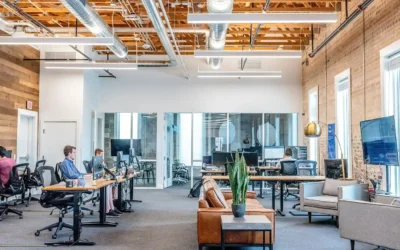What is a Web Designer Responsible For?
ghifari
July 28, 2024
5 min read

In the digital age, a web designer plays a crucial role in creating and maintaining the face of the internet. Websites are the primary means by which businesses connect with their audience, making the role of a web designer more critical than ever. But what exactly does a web designer do? And, in addition to good design sense, what else do web designers need to be proficient in? Let’s delve into the comprehensive responsibilities of a web designer and explore the essential skills required to excel in this dynamic field.
Core Responsibilities of a Web Designer
1. Visual Design
At the heart of web design is visual design. This involves creating the look and feel of a website, ensuring it is aesthetically pleasing and aligns with the brand’s identity. Web designers use tools like Adobe Photoshop, Illustrator, and Sketch to craft layouts, choose color schemes, and design graphics.
2. User Experience (UX) Design
A website must not only look good but also provide a seamless user experience. Web designers are responsible for designing interfaces that are easy to navigate, ensuring users can find information quickly and efficiently. This involves creating wireframes and prototypes to map out the user journey.
3. Responsive Design
With the variety of devices and screen sizes available today, web designers must ensure that websites are responsive. This means the site should adapt to different devices, providing a consistent experience whether accessed on a desktop, tablet, or smartphone.
4. HTML/CSS Coding
While some web designers work closely with developers, having a basic understanding of HTML and CSS is essential. This knowledge allows designers to create accurate mockups and ensure their designs can be effectively translated into a functional website.
5. Content Management
Web designers often work with content management systems (CMS) like WordPress, Joomla, or Drupal. They need to be proficient in setting up and customizing these platforms to align with the design specifications.
6. Graphic Design
Creating visual content such as logos, icons, and images is a key responsibility. This involves a strong grasp of graphic design principles and proficiency in graphic design software.

Additional Proficiencies Needed for Web Designers
1. Understanding of SEO
In addition to good design sense, what else do web designers need to be proficient in? One crucial area is Search Engine Optimization (SEO). A well-designed website is of little use if it doesn’t rank well on search engines. Web designers must understand SEO principles to ensure that their designs are search-engine friendly. This includes proper use of tags, alt text for images, and optimizing site structure for better indexing.
2. Communication Skills
Effective communication is vital in web design. Designers must clearly understand client requirements, collaborate with other team members, and sometimes explain technical details to non-technical stakeholders. Strong communication skills ensure that the project vision is accurately realized.
3. Project Management
Managing time and resources efficiently is crucial for web designers, especially when juggling multiple projects. Familiarity with project management tools like Trello, Asana, or Jira can help designers stay organized and meet deadlines.
4. Problem-Solving Abilities
Web design often involves troubleshooting issues that arise during development. Whether it’s fixing a bug or finding a creative solution to a design challenge, strong problem-solving skills are essential.
5. Knowledge of Web Accessibility
Ensuring that websites are accessible to all users, including those with disabilities, is not only a legal requirement in many regions but also an ethical obligation. Web designers should be proficient in web accessibility standards, such as the Web Content Accessibility Guidelines (WCAG).
6. Keeping Up with Trends
The digital landscape is constantly evolving. Web designers need to stay updated with the latest trends, technologies, and best practices. This continuous learning ensures that their designs remain relevant and innovative.
The Web Design Process
Understanding the web design process is key to appreciating the full scope of a web designer’s responsibilities. Here’s a typical workflow:
1. Discovery and Research
This initial phase involves understanding the client’s needs, target audience, and goals. It includes competitor analysis and gathering inspiration to inform the design.
2. Planning
During the planning phase, web designers create wireframes and site maps. This stage outlines the structure of the site and the user journey.
3. Design
The design phase is where the visual elements come to life. Designers create mockups and prototypes, integrating branding elements, and ensuring consistency across the site.
4. Development
While primarily the domain of web developers, designers often work closely during this phase to ensure the design is accurately implemented. Knowledge of HTML, CSS, and sometimes JavaScript is beneficial here.
5. Testing
Before a website goes live, it must be thoroughly tested. This includes checking for responsiveness, cross-browser compatibility, and ensuring all interactive elements work correctly.
6. Launch and Maintenance
Once the site is live, ongoing maintenance is essential. This involves updating content, fixing any issues that arise, and continuously optimizing for performance and SEO.
Conclusion
The role of a web designer is multifaceted, encompassing visual design, UX, coding, and much more. In addition to good design sense, web designers need to be proficient in SEO, communication, project management, problem-solving, and staying updated with trends and accessibility standards.
At Available Dev, we offer comprehensive web development services that include every aspect of the web design process. Whether you’re looking to create a new website or revamp an existing one, our team of skilled web designers and developers is here to help. Contact us today to take your online presence to the next level!
Related Article
Web Design for Business: A Comprehensive Guide
In the modern digital age, a well-designed website is crucial... In the modern digital age, a well-designed website is crucial for any business aiming to succeed. A website not only...
How to Choose a Web Design Company: A Comprehensive Guide
Choosing the right web design company can be a daunting... Choosing the right web design company can be a daunting task, especially with the plethora of options available today. Your...
What is a Modal in Web Design?
Web design is a dynamic field that constantly evolves to... Web design is a dynamic field that constantly evolves to enhance user experience and engagement. Among the various tools and...


